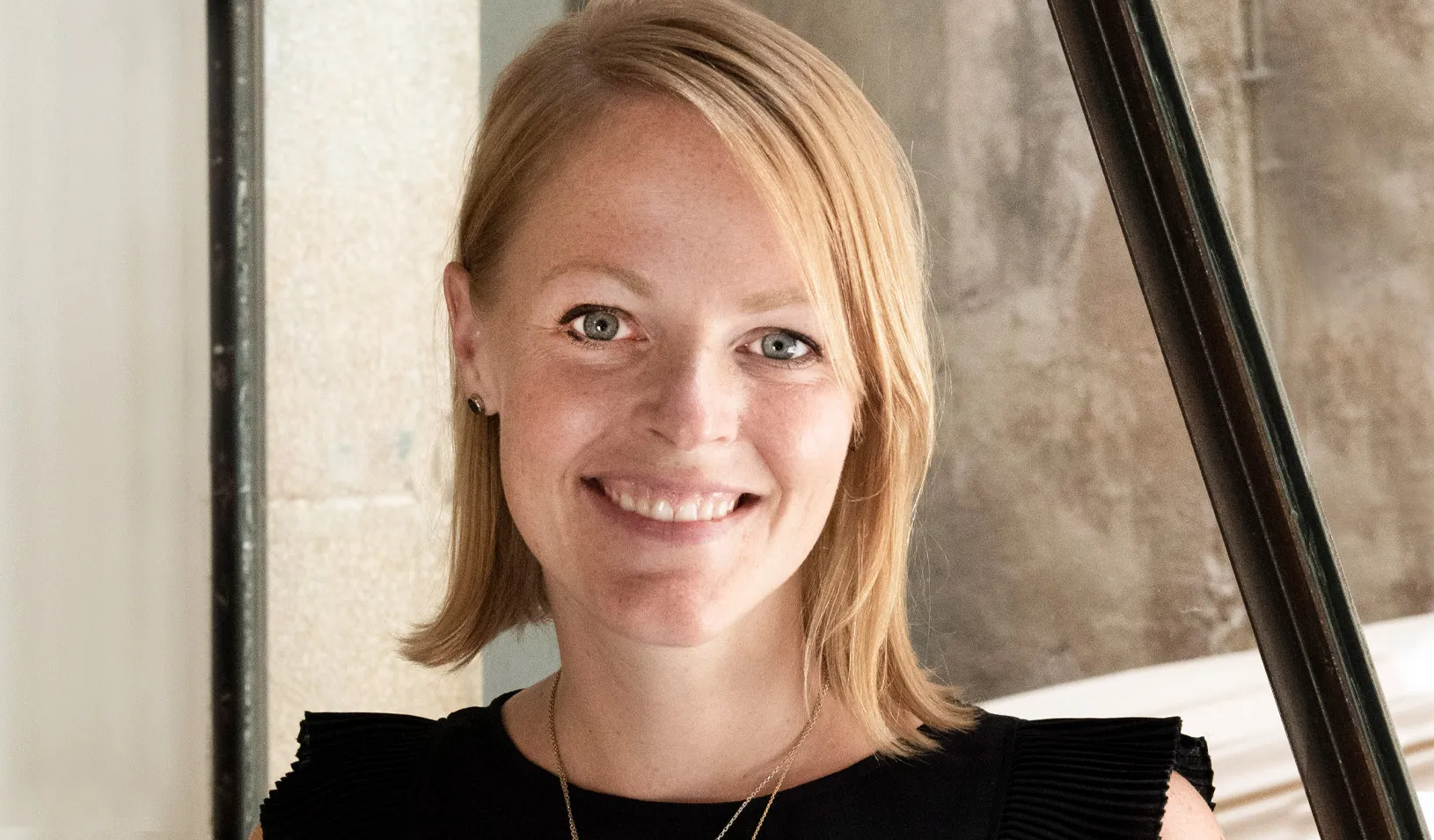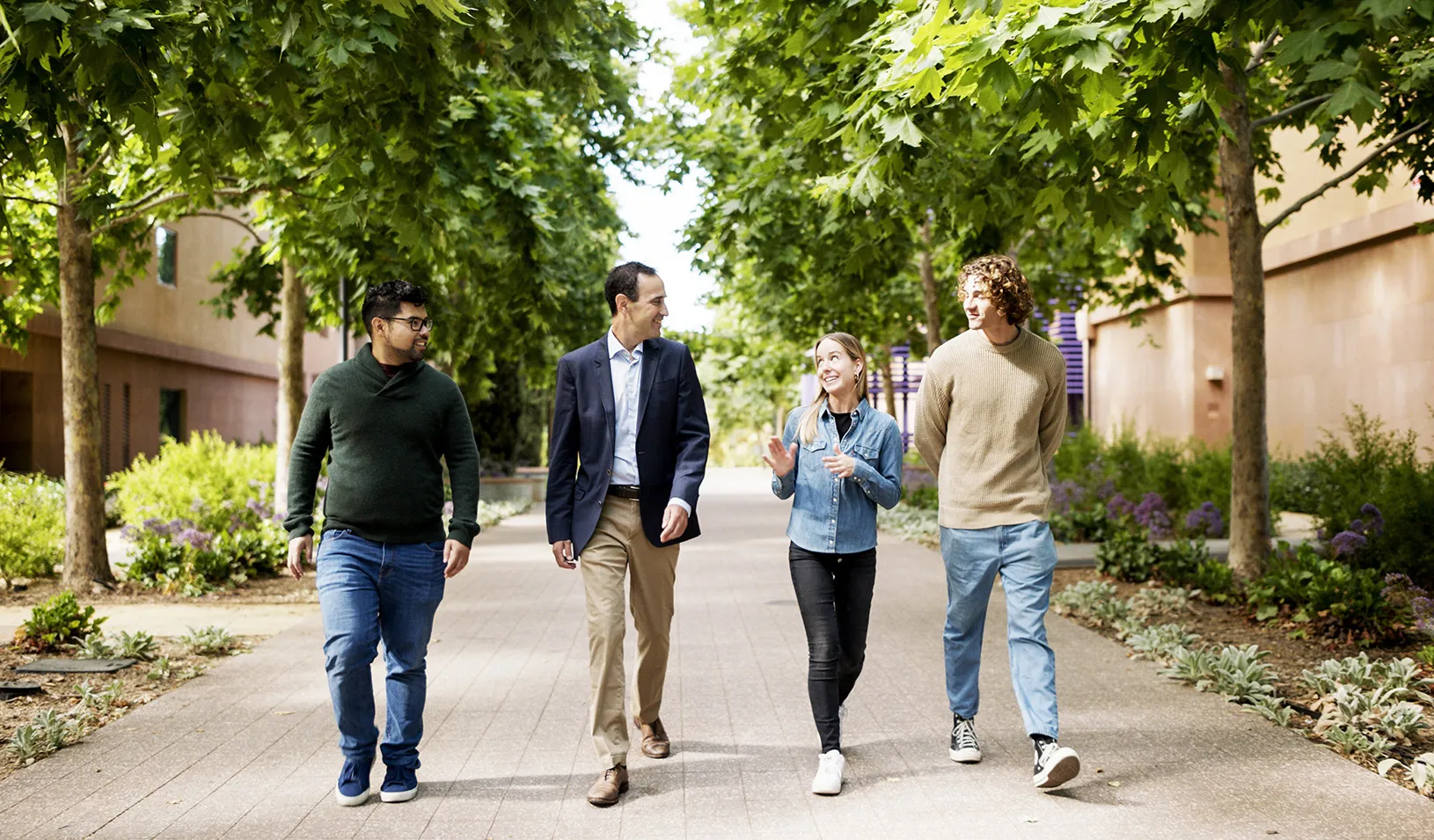Stanford Graduate School of Business Opens its New Home
The $345 million Knight Management Center will enable innovative curriculum in one of the world's most sustainable business school facilities.
April 15, 2011

Knight Management Center
On April 29, Stanford University will celebrate the opening of the Knight Management Center at the Graduate School of Business, one of the world’s most sustainable and innovative business school facilities. As the new home for the business school, the Knight Center is a central element in the school’s forward vision for management education in the 21st century. By pushing boundaries as an educational innovator, the Stanford Graduate School of Business is leading the way in curricular as well as physical design improvements to ensure future leaders receive the finest education as they prepare to tackle the world’s most difficult problems.
Funding for the $345 million facility of eight environmentally sustainable buildings on 12.5 acres was led by Nike founder Philip H. Knight, MBA ‘62, who contributed the $105 million down payment for the project in 2006, the largest gift ever to a business school at the time. “The 2011 opening of the Knight Management Center is an inflection point for the Stanford Graduate School of Business,” said Garth Saloner, the Philip H. Knight Professor and Dean of the Stanford Graduate School of Business. “The new facility fosters the innovative thinking and collaboration required of Stanford GSB students and serves as a launch pad for new courses and programs, as well as a platform from which our faculty will create cutting edge management knowledge in the years to come.”
The opening comes at a time when the school is stretching its vision for management education and thinking deeply about new methods of delivering compelling content and experiences that transform and prepare students from across the globe.
Interdisciplinary Learning
From its location in Silicon Valley, the Stanford GSB’s Knight Center engages faculty and students across Stanford University, alumni, some 2,000 global executives annually, and the broader world community. The center supports increased interdisciplinary learning that exposes students to problem-solving across fields and professions. For example, the center’s NGP CoLab space, without fixed desks, houses collaborative design-thinking classes that bring together medical, business, and engineering students. The 600-person CEMEX Auditorium in Zambrano Hall features university-wide programming to engage non-business students from across campus. “It’s a virtual world, but it is face-to-face interactions-often that happen in serendipitous fashion-that are still critical to the way much of great innovation takes place,” said Stanford University President John Hennessy. “The foresight and generosity of Phil Knight and our other valued donors make this possible. We can’t predict the most interesting new ideas that will be born at the Graduate School of Business, but they will be created there.”
The Knight Management Center enables Stanford’s innovative and expanding global curriculum. In addition to the fundamental canon of business knowledge, the MBA Program introduced in 2007 includes critical analytical thinking in small seminars, a global experience requirement, innovative problem solving, and personal leadership development. In support of that, the Knight Center offers flexible classroom spaces for hands-on experiential learning, small-group leadership labs, and team-based learning.
This approach stretches beyond core MBA, Sloan Master’s, PhD, and Executive Education programs to the school’s newest offerings. For example, in January, the school introduced a new 20-week evening certificate Program in Innovation and Entrepreneurship for working professionals in engineering and the sciences and non-business graduate students. As the school develops new models for delivering these capabilities, it is also looking for original ways it can deliver management education beyond its walls. In March, with the School of Engineering, the business school was part of Stanford University’s recent response to New York City’s request for expressions of interest in the development of an applied sciences and graduate education campus that will serve as a hub for innovation and growth in that city. The school is also expanding its executive education offerings in China, India, and Brazil.
Creating Ideas and Convening Discussion
In addition to preparing leaders to positively shape the organizations they serve, the Graduate School of Business is a source of groundbreaking research and a convener of ideas. With three Nobel laureates in economics since 1990 and a world-class faculty across disciplines from organizational behavior to finance, the school’s thought leadership is pervasive and enduring. Now the new 400-person Oberndorf Event Center will allow an expanded portfolio of thought leadership conferences. The first of these, the Stanford Finance Forum, cosponsored with Stanford Law School, will bring together regulators, bankers, and academics in June. In addition to the conference center, two Cisco TelePresence systems allow remote cross-campus and global classroom communications.
Indoor, Outdoor Spaces
Beyond academic activities, a purposeful open building design-including the attractive outdoor and late-night Arbuckle Dining Pavilion and TA Associates café will draw students and faculty from Stanford’s six other world-class schools of engineering, law, medicine, earth sciences, education, and humanities and sciences to foster informal as well as formal interaction.
More than a half-dozen art pieces populate the open landscape, including Monument to Change As It Changes, a wall of moving squares that evokes the aspirations of the school’s slogan: “Change Lives. Change Organizations. Change the World.” Another lighted installation is titled Ways to Change. “One of the things I like best about the new complex is the cornerstone,” said Dean Saloner. “It reads, ‘Dedicated to the things that haven’t happened yet and the people who will dream them up.’ — This certainly captures the aspiration of the Stanford GSB.”
Environmental Sustainability and Social Responsibility
With the new Knight Management Center, the Stanford Graduate School of Business also aims to demonstrate to students, the business community, alumni, and the general public its commitment to environmental leadership. The 360,000-square-foot complex underscores a focus on responsible management of energy and water resources that is woven into core MBA classes covering sustainability across the functions of business, in the school’s MBA/MS Environment and Resources joint degree program, and in electives such as Environmental Entrepreneurship and Environmental Science for Managers and Policy Makers. In practice, the school will, for example, derive 12% of its energy needs from solar panels, and 90% of interior spaces are lit with natural light to reduce electrical usage.
Generous Alumni
More than 200 alumni of the school contributed to the project, which broke ground in September 2008. In addition to Phil Knight, lead donors include:
- Richard E. Rainwater, MBA ‘68
- Anne T. Bass, MLA ‘07 and Robert M. Bass, MBA ‘74
- Lorenzo H. Zambrano, MBA ‘68 and CEMEX
- Cynthia Fry Gunn, AB ‘70, and John A. Gunn, AB ‘65, MBA ‘72
- Stephanie Palmer McClelland, BS ‘70, MS ‘72, and W. Carter McClelland, BS ‘67, MBA ‘73
One of the eight buildings, called the MBA Class of 1968 Building, is so named for the class whose members, including Rainwater, came together to fund a significant portion of the project. In a 2008 video interview with former Dean Robert L. Joss, Knight recalled his Small Business Management professor Frank Shallenberger, in whose class he prepared the first blueprint for Nike. “He was inspirational and he was really motivating,” said Knight. “His class motto was: ‘The only time you must not fail is the last time you try.’ The class contributed mightily to my having the confidence and enthusiasm to start everything that led to Nike. I hope the new campus will inspire many generations to come.”

Bass Center
Planning for the Knight Management Center began a decade ago under the guidance of then-Dean Joss. The Advisory Council of senior alumni urged Joss to expand beyond a single building plan to create an entirely new complex that would last 75 years into the 21st century. Under Joss’ watch, the school raised the necessary funds and embarked on an architectural design around a series of smaller buildings with varied social and academic spaces that would reflect both the sense of community and collaboration at the Stanford GSB, as well as encourage the innovative spirit present across Stanford University. “The best buildings in the world derive from a clear sense of what people want them to become,” said Stan Boles, principal architect for Boora Architects, which designed the Knight Center. “We were inspired by the Stanford Graduate School of Business vision for educating the world’s future leaders. Innovation and collaboration are paramount.”
Boora Architects of Portland, Ore., which has a strong practice in environmentally sustainable building systems and also designed four buildings in the new Science and Engineering Quad at Stanford, was the lead architectural firm on the large-scale project and completed the building with Turner Construction. Other key contractors included Arup Engineering, landscape architect Peter Walker and Partners, pre-design architect Bohlin Cywinski Jackson, and master planner William Rawn Associates.
April 29 Open House 2-5 pm
The April 29 opening will feature an Open House for the general public, as well as for all Stanford University students, faculty, and staff, from 2 to 5pm Festivities will include a debate on leadership by Stanford GSB faculty members Jeff Pfeffer and Joel Peterson at 2:30pm; music by the Stanford Band and campus a cappella groups; and food from Bon Appetit in the Arbuckle Dining Pavilion, Coupa Café at TA Associates café, and the Schwab Residential Center chef. Prizes, custom-made T-shirts, and other activities will contribute to a lively afternoon as the Stanford Graduate School of Business ushers in a new era with this new facility.
For media inquiries, visit the Newsroom.
Explore More
Erin Nixon Joins Stanford GSB as Assistant Dean of Admissions

Nia Rose Froome, MBA ’23: Making Local, Fresh Food Available for All

New Research Fund Promotes Responsible Leadership for the Next Century
